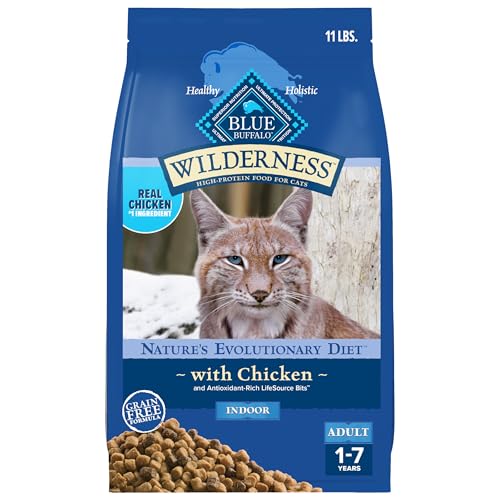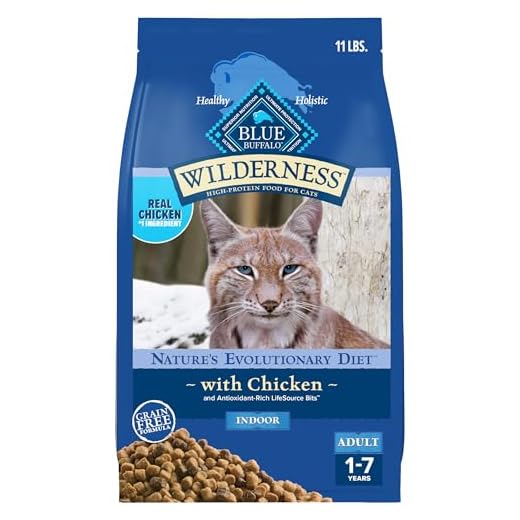



Regular grooming is a game changer. Brushing my fur at least three times a week minimizes loose hairs and keeps my coat looking fabulous. Invest in a high-quality brush designed for my breed, as it effectively removes dead hair and reduces matting.
Nutrition plays a significant role too. A balanced diet rich in omega-3 and omega-6 fatty acids promotes a healthy coat. Quality cat food specifically formulated for skin and fur health can make a noticeable difference. Always keep me hydrated with fresh water, as this supports my overall well-being.
Stress management is crucial. Providing a calm environment with plenty of playtime and cozy spots allows me to feel secure. Consider interactive toys and regular play sessions to keep my mood elevated. Reducing stress can lead to less excess fur.
Lastly, regular vet check-ups can identify underlying health concerns. Conditions like allergies or skin issues might contribute to increased fur loss. Keeping up with vaccinations and preventative care ensures I remain in tip-top shape.
Reduce Excess Fur Loss
Regular grooming is key. I recommend brushing at least three times a week. This helps remove loose hair and prevents it from scattering around the house.
Invest in a high-quality brush designed for my coat type. For my Scottish Fold fur, a slicker brush works wonders. It reaches the undercoat and catches more hair.
Diet and Hydration
A balanced diet rich in omega-3 and omega-6 fatty acids supports healthy fur. Look for food that lists these nutrients. Fresh water is equally crucial; it keeps skin hydrated and reduces flaking.
Environment Control
Keep the living space clean. Regular vacuuming and using lint rollers can reduce the visible fur around the house. Adding air purifiers also helps, as they trap allergens and pet dander.
Understanding the Shedding Process in Cats
Regular brushing is essential for managing fur loss. By removing loose hair, you reduce the amount that ends up on your furniture and clothing.
Why Do Felines Lose Fur?
- Seasonal changes trigger a natural cycle. Warmer months often lead to increased fur loss as my body prepares for heat.
- Health issues, like allergies or skin conditions, might also contribute. It’s wise to consult a vet if excessive fur loss occurs.
- Diet plays a significant role. A balanced diet rich in omega fatty acids supports healthy skin and fur.
Tips for Fur Management
- Invest in a quality grooming tool to maintain a consistent routine.
- Regular baths can help, but not too frequently; once a month is often sufficient.
- Ensure a nutritious diet, considering supplements like fish oil for added benefits.
- Keep the living area clean to minimize allergens that may exacerbate fur loss.
If you suspect health-related issues, exploring options like the best roundworm dewormer for cats can be beneficial.
Choosing the Right Diet for Reduced Shedding
Incorporating a balanced diet filled with high-quality proteins and essential fatty acids plays a significant role in minimizing fur loss. Focus on meals that include real meat sources like chicken, turkey, or fish. These proteins contribute to healthier skin and a shinier coat.
Consider options enriched with omega-3 and omega-6 fatty acids. These nutrients help maintain skin hydration and reduce dryness, which often leads to excessive fur loss. Look for ingredients like salmon oil or flaxseed oil in the food.
Stay away from low-quality fillers such as corn, soy, or by-products. These ingredients can cause skin irritations and allergies, leading to increased fur loss. Instead, choose brands that prioritize whole foods and natural ingredients.
| Ingredient | Benefit |
|---|---|
| Chicken | High-quality protein for coat health |
| Salmon Oil | Rich in omega-3 fatty acids for skin hydration |
| Flaxseed Oil | Source of omega-6 fatty acids for fur strength |
| Sweet Potatoes | Natural source of vitamins and minerals |
Always ensure fresh water is available. Hydration is key for maintaining healthy skin and fur. Regular vet visits for dietary advice based on individual needs can also help tailor the best nutrition plan.
Regular Grooming Techniques to Minimize Fur Loss
Daily brushing is a must. It keeps my coat healthy and removes loose hairs before they end up everywhere. A slicker brush works wonders, especially for long-haired varieties. I also enjoy a rubber brush; it feels good and collects fur effectively.
Bathing occasionally helps too. Use a gentle cat shampoo, ensuring it’s formulated for felines. A clean coat sheds less, and it’s a nice experience when done right. Be sure to dry me thoroughly afterward; damp fur can lead to discomfort.
Investing in grooming gloves can be beneficial. These not only remove fur but also provide a bonding moment. Plus, they’re easy to use and perfect for quick touch-ups between more thorough grooming sessions.
Regular nail trimming reduces the chance of accidental scratching during grooming. Keeping my claws short means less stress for both of us during brush time.
Consider a high-quality air purifier to maintain a fur-free environment. It captures pet dander and hair, making it easier to breathe. If you’re interested, check out this link: does air scrubber plus produce ozone.
Lastly, make grooming a positive experience. Use treats and praise to reinforce good behavior. It makes the process enjoyable and keeps me looking my best!
Environmental Factors That Influence Shedding
Maintaining a stable indoor climate is key. Keep the temperature consistent; avoid extreme fluctuations that may trigger fur loss. Ideal conditions range between 65°F to 75°F (18°C to 24°C).
Humidity levels play a significant role as well. Low humidity can dry out my skin, leading to increased fur loss. Aim for a humidity level of about 30% to 50%. Consider using a humidifier during dry seasons.
Lighting impacts my mood and health. Natural light exposure helps regulate my biological clock and reduces stress, which in turn can minimize fur fallout. Ensure I have access to sunny spots throughout the day.
Stressful environments can lead to excessive fur loss. Create a calm space with cozy spots to retreat. Incorporate interactive toys and climbing structures to keep me engaged and reduce anxiety.
Air quality matters too. Dust, smoke, and strong odors can irritate my skin. Regularly clean and ventilate my living space. Air purifiers can also help maintain a healthier environment.
Flea infestations lead to constant scratching and fur loss, so regular pest control is essential. Consult with a veterinarian for appropriate preventive measures.
Lastly, seasonal changes bring variations in shedding. In spring and fall, expect an increase as I adjust to temperature changes. Regular grooming during these times can help manage the extra fur.
When to Consult a Veterinarian About Shedding Issues
If excessive fur loss occurs suddenly or is accompanied by other symptoms, seek veterinary advice immediately. Signs to watch for include skin irritations, bald patches, or noticeable changes in behavior such as increased scratching or grooming. These could indicate underlying health conditions like allergies, parasites, or hormonal imbalances.
A visit to the vet is also recommended if there is a significant change in the frequency or amount of fur loss compared to normal seasonal patterns. Persistent shedding beyond the typical cycles may warrant further investigation to rule out medical concerns.
Monitoring changes in appetite, energy levels, or behavior alongside fur loss can provide valuable information to a veterinarian. Collecting this data can help in diagnosing potential issues, ensuring a swift response to any health threats.
If your friend frequently licks or bites at their skin, this behavior could signify discomfort or stress, requiring professional evaluation. Early intervention can prevent complications and promote overall wellness.









